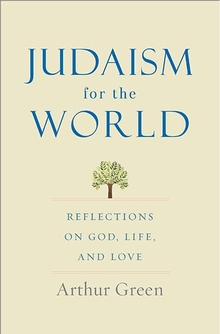Arthur Green—
There is only One. That is the great truth of mysticism, found within and reaching beyond all religions. That One embraces, surrounds, and fills all the infinitely varied forms that existence has taken and ever will take. We Jews call that truth out twice daily in reciting Shema‘ Yisra’el, “Hear, O Israel.” “Y‑H‑W‑H is One” means that there is none other. Our daily experience of variety, separate identity, and alienation of self from other renders an incomplete and ultimately misleading picture of reality. “You were One before the world was created; You are One since the world was created.” Unchanged, eternal—worldly existence covers over the reality of that deeper truth, but human consciousness is so constructed as to permit glimpses of it to shine through. The one Being is clothed within each being. It reveals itself to the human heart that stands open to it. Such moments, reaching beyond any separation between “Self” and “other,” are the core of sacred awareness. All the trappings of religion exist in order to bring us to such moments and—no less important—to bring us back, enriched and transformed, from them.
But if this is our religious truth, what does it mean to love, or to be loved by, God? We religious minorities, living in a Christian society, feel the pressure of that question all the time: “Do you believe that God loves you?” But love, so it seems, is a relationship between two distinct selves. I love you (or You), and I hope that you love me in return. But what is a love in a world where there is only One?
“He blew the breath of life into his nostrils,” Genesis (2:7) says of God and Adam. One of our early commentators wrote, “Whoever breathes into someone is blowing of his own breath.” Human breath is divine breath. We return that breath to God in the daily cycle of praise, as the concluding verse of the Psalter says: “Every breath praises God. Halleluyah.” The word for breath in both of those verses is neshamah, which also comes to mean “soul.”
“The human soul is a part of God above,” teach the Kabbalists. But God is one and indivisible; therefore God is entirely present within each human soul. The God within us, our very breath of life, senses that it is part of something greater, the divine Self present in every other creature and in the great mystery surrounding and embracing us all. It longs to open us up to make that longing real, to bring us into harmony with all the other God-bits scattered throughout the world. “On that day will Y‑H‑W‑H (“Was-Is-Will be”) be One and its name one” (Zech. 14:9).
Question: How do you pray to such a God? Answer: You don’t. You just need to be present, to let the prayer blow through you. The words and tunes are mere background to that sacred process. You are just the shofar, the ram’s horn, through which the prayer is blown. God is the pray-er, the pray-ee, and the prayer itself. “People think you pray to God,” said one of the Hasidic masters, “but that is not the case. Prayer is God.”
Arthur Green is the Irving Brudnick Professor of Philosophy and Religion at Hebrew College and rector of the Rabbinical School, which he founded in 2004.
Further Reading:



 Deobandism, Islam and the Religious Narratives of the Taliban
Deobandism, Islam and the Religious Narratives of the Taliban